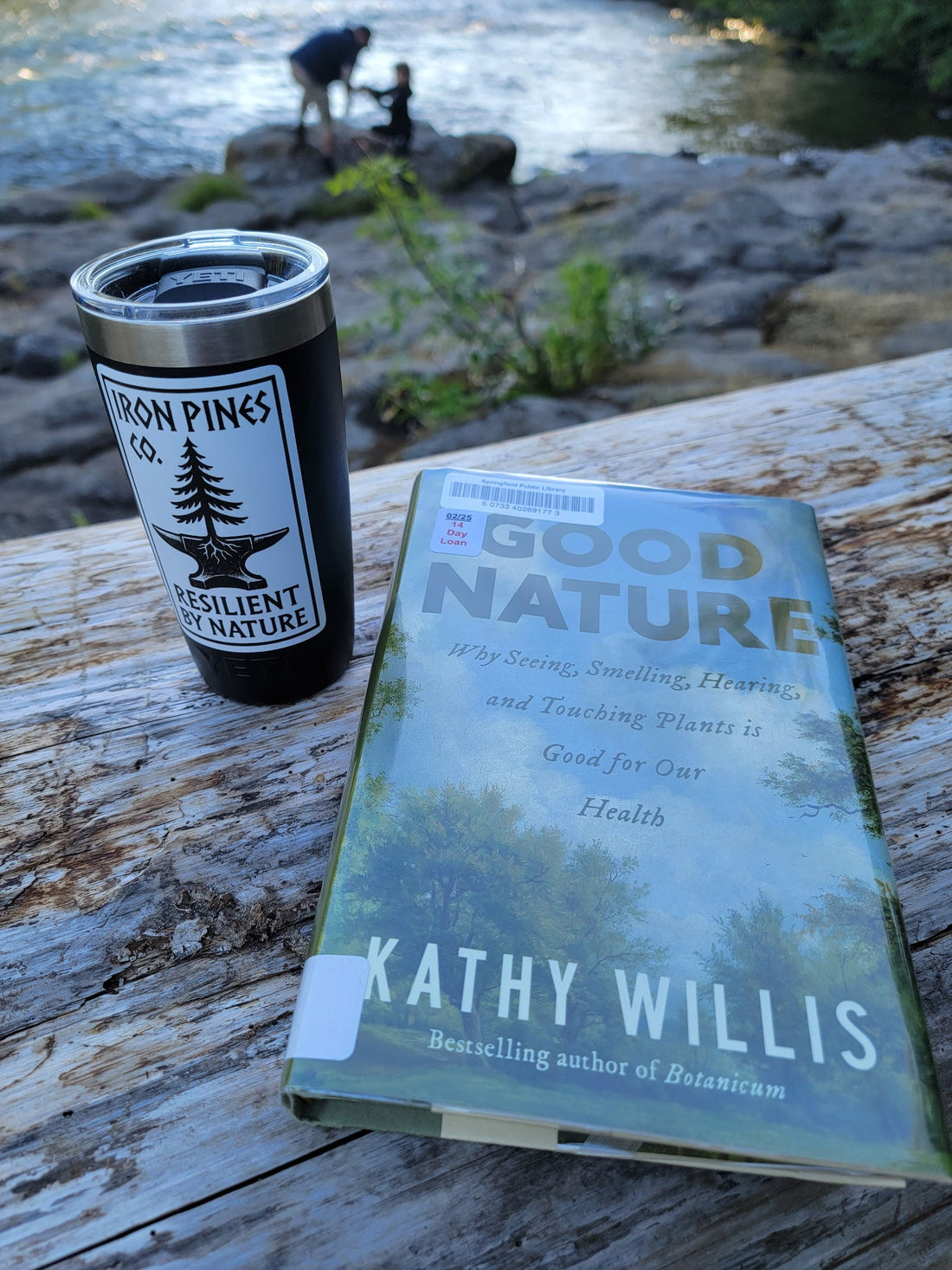
Iron Pines Book Club: 3 Takeaways from Good Nature by Kathy Willis
Share
While most of the blog posts in The Forge are written by Iron Pines founder and co-owner, Cory, today’s post is authored by Iron Pines’ other half, the less feral half, known here as O.

At Iron Pines we know intuitively that we feel different when we spend time in nature. We feel more present, the chatter in our heads (usually) falls away, or at least gets quieter, and we seem to be able to take bigger, deeper breaths. But why?
When I saw Kathy Willis’ Good Nature: Why Seeing, Smelling, Hearing, and Touching Plants is Good for Our Health at our local library (support your local libraries, y’all) I immediately checked it out. To be fair, it’s been a slow read spanning two separate check-out stints, but that doesn’t mean I haven’t found the different chapters piquing my curiosity and leaving me wanting to dive into the research of the physiological and psychological health benefits of nature.
Willis does a solid job of breaking down our relationship with nature through four out of five of our senses (no, food foraging tips or tricks in this book!) by highlighting a variety of studies across the globe. Here are my top three takeaways.
Time in nature (including smaller, natural spaces in urban environments) helps reduce our stress levels. And there is science that points to the suggested amount of time: 20 minutes at a time, for at least 120 minutes per week. This could mean anything from an amble through the park with your dog, or having a picnic with your family, to more of the bigfoot-style nature escapism. When we spend time walking and/or sitting in nature, Willis highlighted that “distinctive differences emerged in the cortisol and salivary amylase values associated with these times.” While these studies defined 20 minutes as the optimal time to spend in nature, “Shorter than this and the evidence for stress reduction was significantly smaller, more time than this and even though the benefits continued to accrue, this was at a greatly reduced rate.”
Even if you’re not able to escape the hustle and bustle to spend days, or even hours in the outdoors, there are ways to bring benefits to you. Maybe they don’t have the same level of impact, but there is still some impact. Listen to birdsong or other nature sounds, diffuse certain essential oils to distribute plant smells, or decorate your space with pictures or paintings of natural landscapes. Willis shares some pretty fascinating science when digging into these benefits; like the smell of conifers has an “apparent ability to increase levels of natural killer cells in our blood. Killer cells play a major role in the host-rejection of virally infected cells and cancer tumours.” Or how in a variety of studies, it was shown that listening to nature sounds while experiencing high levels of medical stress and/or pain (a variety of different types of surgery) caused those levels to go down in comparison to a control group that did not listen to such sounds.
It’s nice to know we can benefit in these ways and more (read the book!) when leaving the house or finding spare time is challenging.
There is not enough research in these areas. Willis touched on this several times throughout the book. I appreciated the call-out related to the limited number of studies or the limited scope of the studies highlighted. Willis makes solid connections between the science and city planning efforts, impacts on the medical world, etc. - and I think it’s all worth exploring more. But I feel like this limitation brings to mind questions related to funding and what topics get explored because of who may be asking the questions…and footing the bill.
Personally, I want to know more about studies in these areas. If you have any information along these lines to share, please comment and point me in the right direction!
-
O
References:
Willis, K. (2024). Good Nature: Why Seeing, Smelling, Hearing, and Touching Plants is Good for Our Health. Pegasus Books, Ltd.
